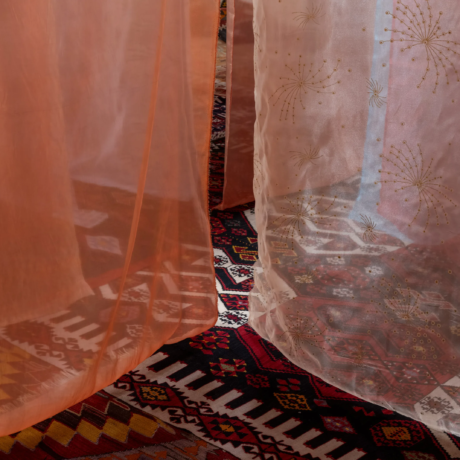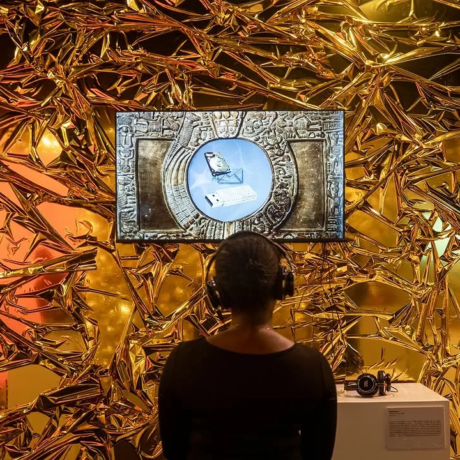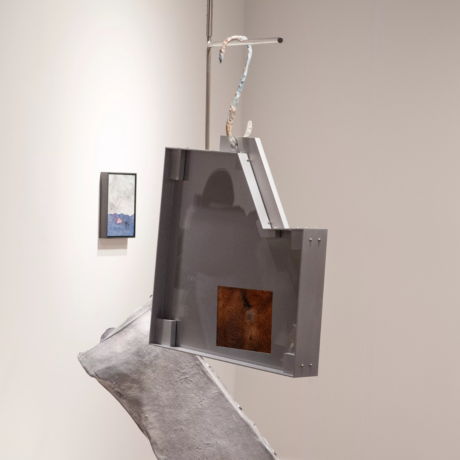Within the commercial and diplomatic landscape of Geneva, Yves Scherer’s work serves as a gentle yet profound reminder of the enduring power of dreams, sentiment, and imagination in a time that feels like world historical rupture. Below Sofia Hallstrom explores Scherer’s work at Art Geneve.
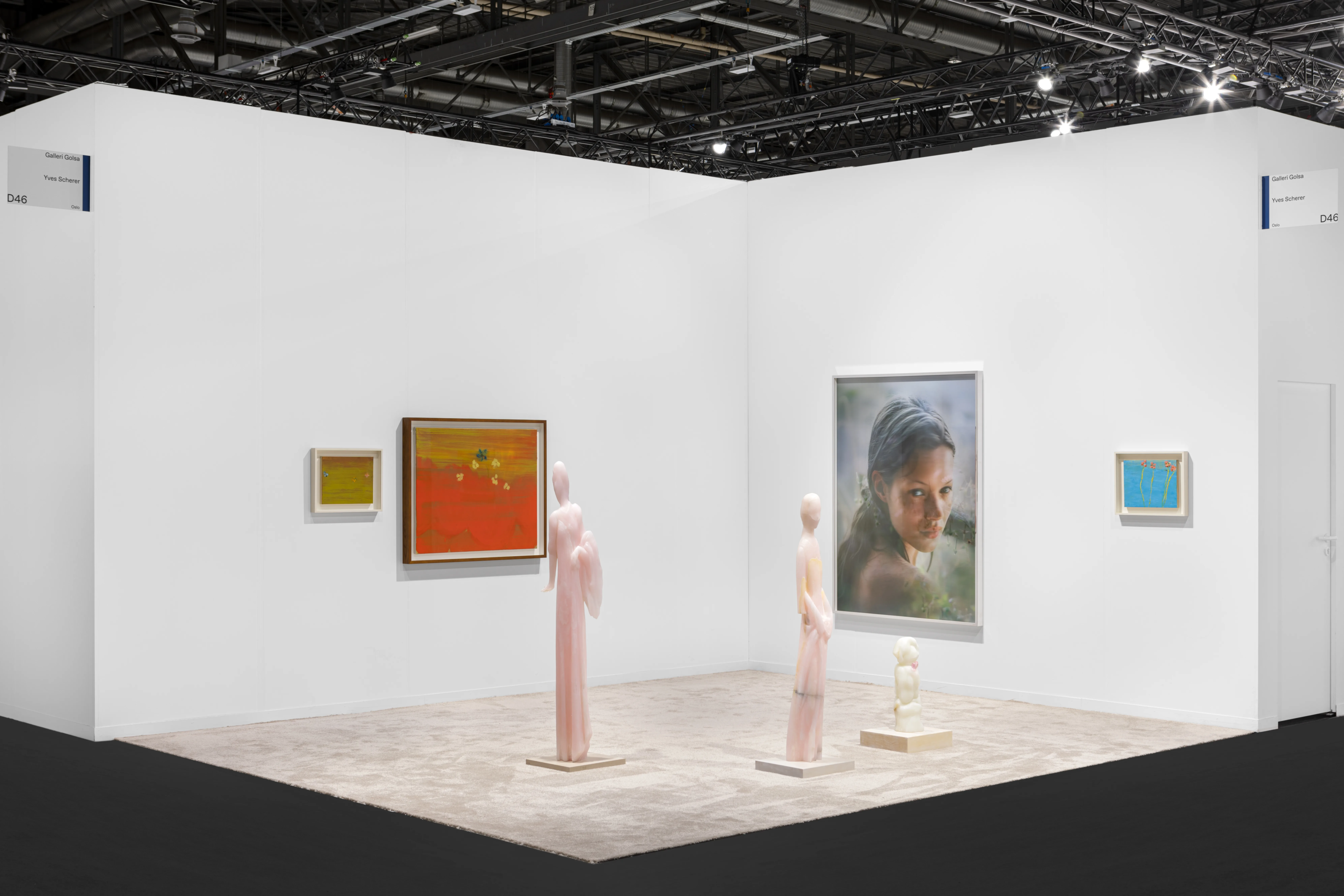
Set in a corner of Art Genève on a plush baby pink carpet, Yves Scherer’s (b. 1987) presentation is an ethereal dreamscape where painting, sculpture, print, and lenticular works merge. His solo presentation with Galleri Golsa, Oslo, leaves visitors feeling a strong sense of nostalgia, while simultaneously elevating the experience to one of spiritual transcendence.
Three pink and white free-standing onyx sculptures take up the floor space of Scherer’s presentation. The sculptures are delicately carved to resemble religious icons, angels, or small cuddly teddy bears in an attempt to blur the lines between the sacred and the sentimental, between childhood and spirituality. Made in onyx, a hard, silicate mineral which contrasts with the softness of the forms, Scherer sculpts angels, teddy bears – sentimental childhood objects that are typically associated with comfort and innocence. Here, however, they are immortalised in stone. The smallest statue, which holds a cut glass pink-coloured heart, embodies both fragility and strength, vulnerability and resilience. The heart, a universal symbol of love and sentimentality, feels almost frozen in time, as if longing to preserve the purity of youth in a world increasingly defined by cynicism.
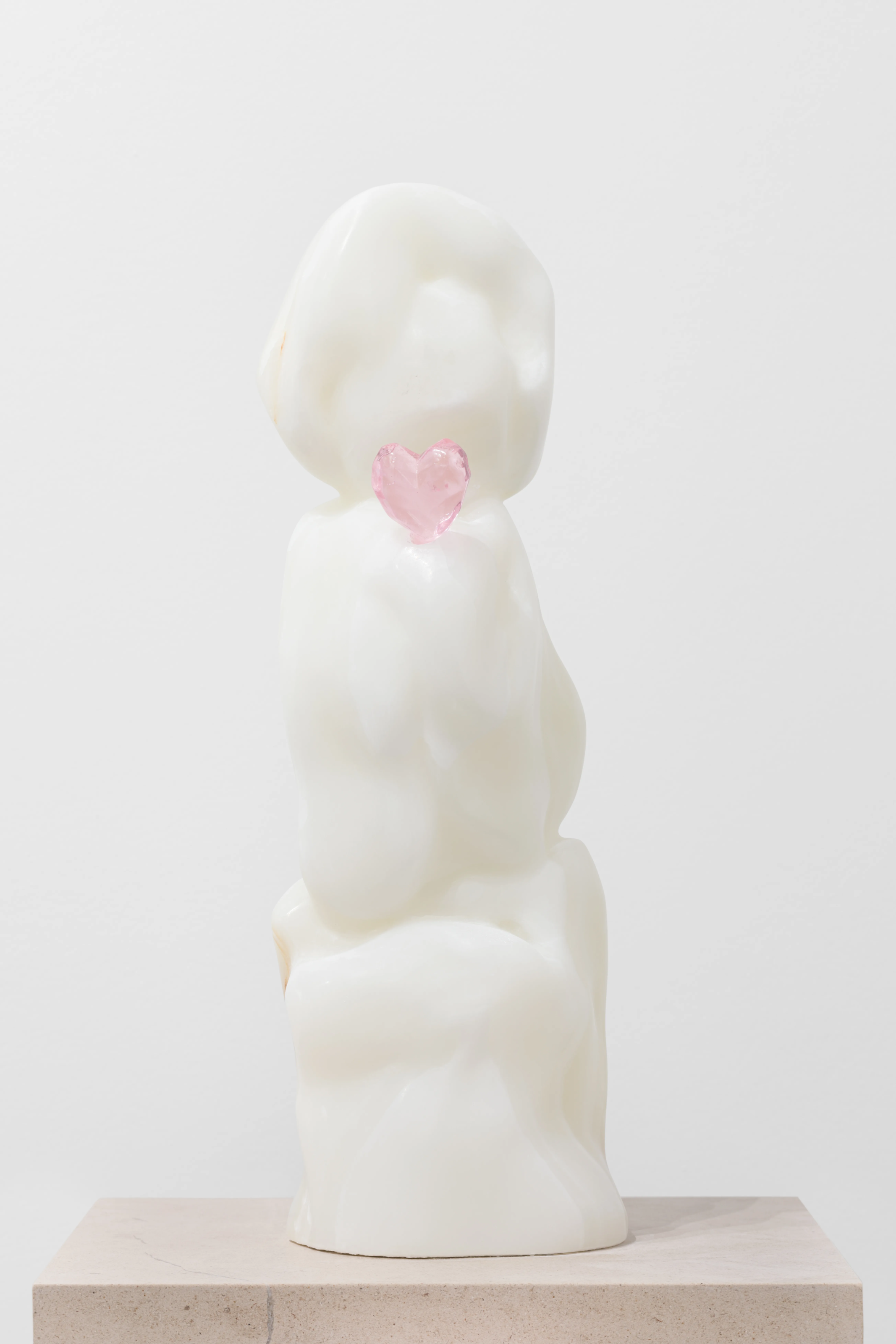
Throughout history, angels have been depicted as messengers, guardians, and symbols of divinity. The winged figure of Eros, one of the most recognisable ancient motifs, embodies the relationship between desire and innocence. In Roman mythology, Cupid, the counterpart of Eros, was sometimes portrayed as a small mischievous child and at others as a young man in love with Psyche. Scherer’s sculptural forms, reminiscent of these depictions, recall the way classical figures evolved to embody varying ideas about love, purity, and emotional vulnerability. His use of pink and white onyx adds to the celestial quality of the figures; onyx is a spiritual material with an energy believed to ground and stabilise the wearer, enabling them to make rational decisions and stay focused. The stone is also considered beneficial for boosting intuition and fostering spiritual growth.

Scherer is Swiss, though he lives and works in New York. His practice is known for blending personal narratives with fanfiction to examine the interplay between the private and the public. Utilising a diverse range of media in his work, Scherer incorporates elements as varied as paparazzi photos, popular culture, images of the natural world, and tatami mats in the studio, resulting in an artistic practice that offers viewers a lens through which to explore themes of selfhood, relationships, and daily life. By assembling a symbolic iconography that both harmonises and clashes, Scherer creates a tension that invites reflection on the contradictions between personal and collective identity.
The most striking piece in the presentation is a lenticular portrait of Kate Moss that transforms as the viewer moves around it. The portrait gradually morphs into a blooming blue flower, evoking the transient nature of celebrity. In a society that rapidly consumes images, often stripping them of their original impact, beauty and fame are often idolised, commodified, and quickly replaced by the next trend or public figure. The lenticular technique requires active participation, revealing and concealing elements, always transforming. Through these changes, Scherer comments on the impermanence of stardom, the transitory nature of physical beauty, and the media’s role in shaping and reshaping public perception.
The juxtaposition of Kate Moss, an icon of 1990s fashion, with a blooming flower introduces another layer of meaning — from youth to maturity, from the artificial to the organic, from a marketable image to something unchanged derived from the natural world. The shift in imagery also speaks to the way we recall cultural icons; our perception of them changes over time, morphing in response to nostalgia, personal memories, and media reinvention.

Scherer’s Imagine painting series (2025) adorns the surrounding walls with broad, horizontal swaths of blended green, orange, and yellow, punctuated by precise dabs of colour which form clusters of flowers that emerge from the abstract landscapes. The title itself evokes John Lennon’s 1971 song Imagine, which envisions a world free of materialism, borders, and religious divides. Scherer’s works reflect a similar sense of yearning for a world beyond current limitations. The sweeping colours feel immersive and hopeful, drawing the viewer into a realm of possibility and dreamlike beauty. The presence of flowers — often symbols of renewal and fleeting perfection — suggests an awareness of impermanence, yet also a belief in the cyclical nature of hope and beauty. The reference to Imagine in 2025 could be seen as nostalgic, evoking an era of countercultural optimism, or ironic, questioning whether the world has drastically moved from Lennon’s vision.
Scherer’s presentation at Art Genève is particularly striking given its setting in Geneva, a global hub of finance and diplomacy. The contrast between the city’s pragmatic, bureaucratic environment and the dreamlike, sentimental quality of Scherer’s work augments its impact. Art Genève itself, held in Palexpo’s vast 102,000 square meters of exhibition space, is an art fair where commercial and artistic ambitions intersect. Within this context, Scherer’s work stands out as a poetic counterpoint to the business of buying and selling art. While many contemporary artists engage with political and economic themes through stark, conceptual interventions, Scherer instead embraces sentimentality, imagination, and escapism.
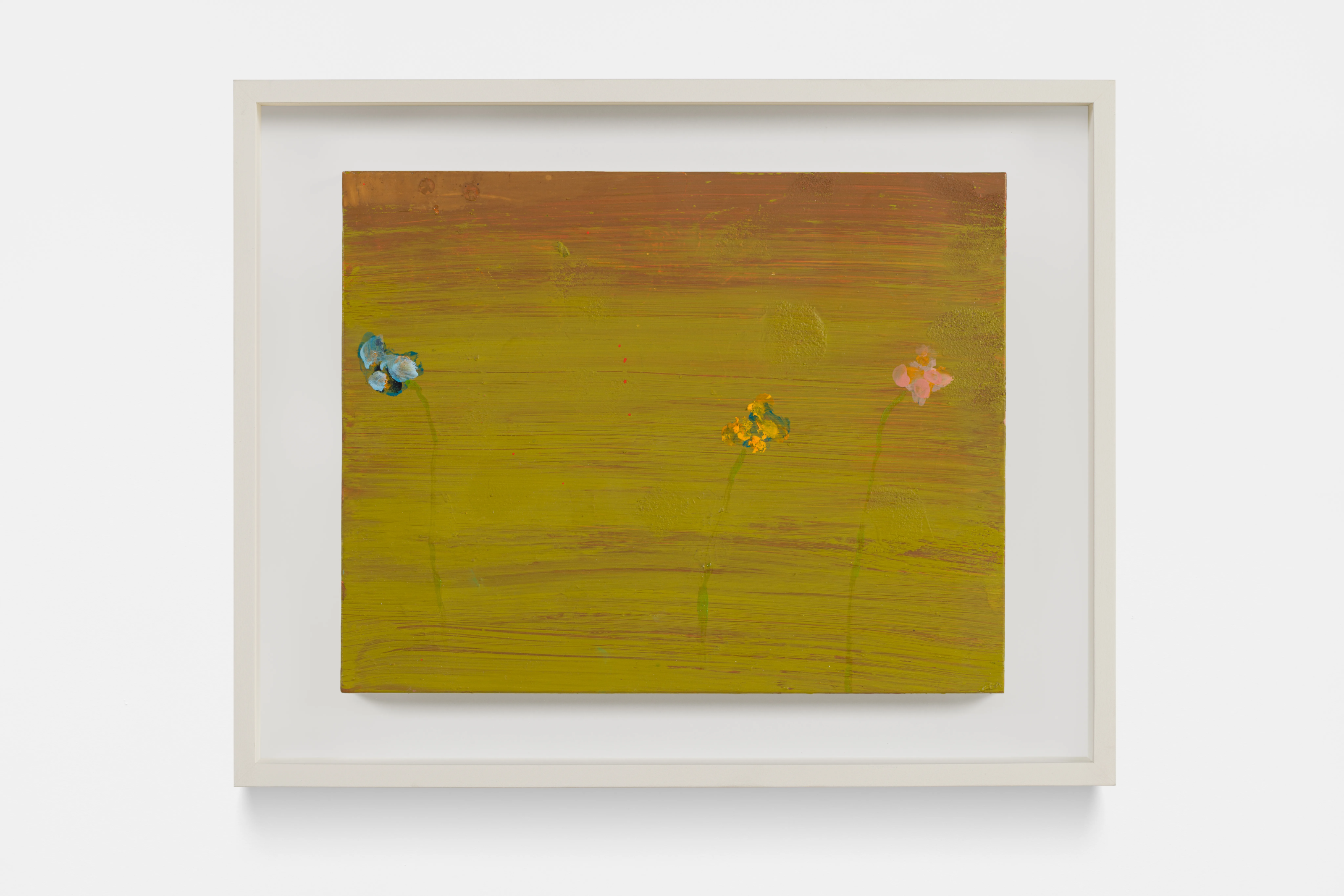
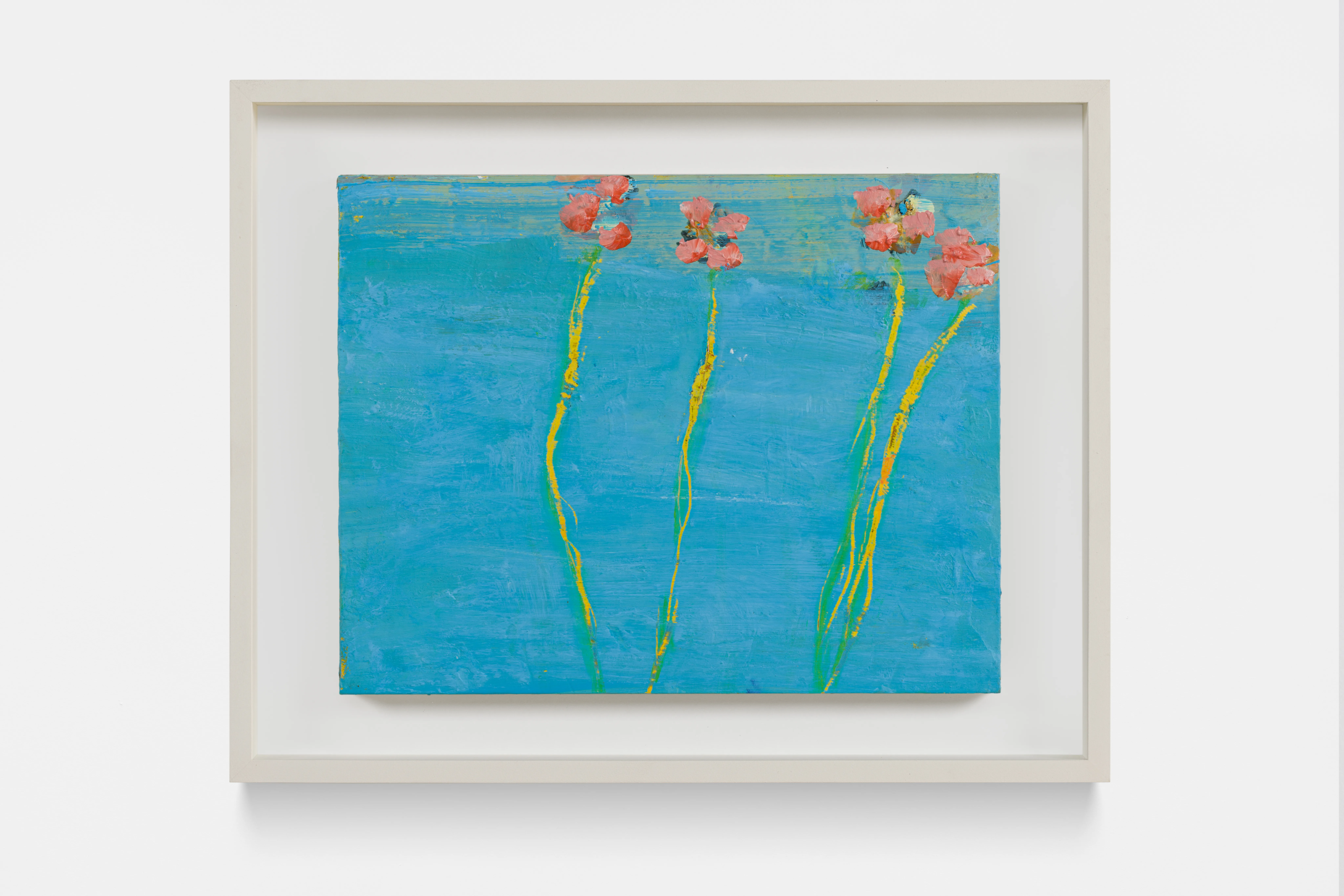
His work also reflects broader artistic trends at Art Genève, where artists are increasingly blending nostalgia with contemporary concerns. The tension between permanence and ephemerality, materialism and innocence, beauty and commodification runs through many of the fair’s standout presentations. Other notable exhibitors, such as Isabella Ducrot with Galerie Mezzanin, a presentation of Man Ray’s sculptures and drawings at Larkin Erdmann, Giosetta Fioroni paintings at M77 Gallery, and Mattias Gasser at Sebastian Bertrand explore similar themes through different mediums, reinforcing contemporary art’s increasing engagement with memory, myth, and transformation.
Written by Sofia Hallstrom.
